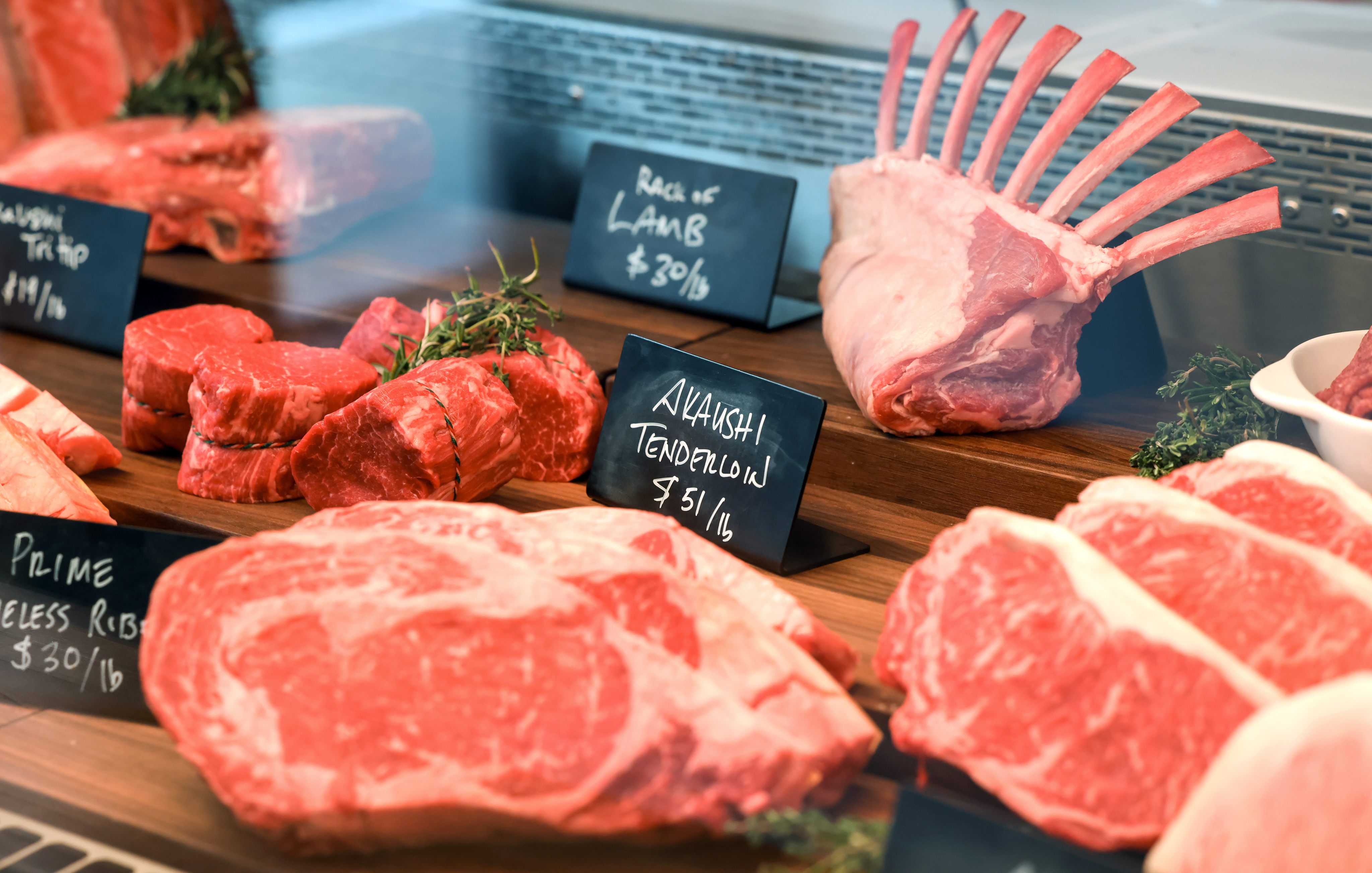Local, fresh meats at Bagley Meat Market Edwardsville IL for a fresher meal.
Local, fresh meats at Bagley Meat Market Edwardsville IL for a fresher meal.
Blog Article
Just How to Choose the Perfect Cut of Meat From a Trusted Meat Market
Choosing the excellent cut of meat from a relied on meat market calls for a thoughtful method that stabilizes top quality, cooking function, and budget plan. Understanding the different kinds of meat and their respective cuts is crucial, as is engaging with your butcher to get understandings into sourcing and prep work. Observing attributes such as shade, appearance, and marbling can further direct your decision. As you consider these factors, it comes to be clear that the subtleties of your option might significantly affect the end result of your meal, prompting a deeper expedition of the criteria that truly matter.
Understanding Meat Cuts


For example, the tenderloin is valued for its buttery structure and marginal connective tissue, making it ideal for quick food preparation approaches such as cooking or pan-searing. On the other hand, tougher cuts like the brisket or shank take advantage of slow-moving food preparation strategies to damage down collagen, yielding rich and delicious outcomes.
Furthermore, the fat content of a cut plays a critical duty in flavor profile and wetness retention throughout cooking. Cuts with higher fat web content, such as ribeye, provide a more durable taste, while leaner options, like sirloin, may require cautious prep work to avoid dry skin (bagley meat market edwardsville il). Understanding these nuances enables for notified options that boost cooking developments, making sure that each dish showcases the finest top qualities of the selected meat
Elements to Consider
When selecting the ideal cut of meat, several important elements enter play that can significantly impact the last meal. Primarily, take into consideration the type of meat you want-- beef, pork, lamb, or chicken-- as each deals unique tastes and structures. The specific cut within that category is equally vital; for example, ribeye supplies abundant marbling, while tenderloin provides a lean, buttery appearance.
An additional aspect is the cooking approach you plan to utilize. Cuts ideal for grilling, such as T-bones or sirloins, vary from those much better matched for slow-moving food preparation, like chuck roasts or shanks. Additionally, quality is extremely important; always choose meat with a lively color and firm structure, indicating top quality and appropriate handling.
Costs cuts may provide outstanding preference, however there are also affordable choices that, when prepared properly, can generate tasty outcomes. Stabilizing these factors will certainly aid you pick the excellent cut for your culinary needs.
Questions to Ask Your Butcher
A butcher's expertise can be very useful when choosing the perfect cut of meat for your cooking endeavors. Start by inquiring about the source of the meat.
Following, ask regarding the different cuts offered for the sort of meat you choose. An experienced butcher will certainly clarify the nuances of each cut, assisting you choose one that matches your food preparation approach and desired result. Do not be reluctant to ask about the very best food preparation strategies for a specific cut; butchers commonly have suggestions that can improve your dish.
It's likewise prudent to ask regarding the meat's quality. An excellent butcher will certainly be eager to share i loved this their knowledge and recommend cuts that will certainly delight your palate. Engaging your butcher with these inquiries can considerably enhance your meat option experience.
Acknowledging Top Quality Meat

Structure is an additional vital aspect; high quality meat should really feel strong and slightly springy to the touch. this post Stay clear of any type of cuts that feel slimed or exceedingly dry, as these can show perishing or incorrect storage space. In addition, smell plays an essential function; fresh meat should have a clean, neutral aroma, while any off-putting or sour smells are warnings.
Finally, consider the resource. Acquiring from a credible meat market, where the meat's beginning is understood, can make sure better requirements. By focusing on these indicators-- color, marbling, texture, scent, and resource-- you can confidently choose cuts that will certainly boost your food preparation and dining experience.
Cooking Approaches for Each Cut
Selecting the ideal food preparation method is paramount for making best use of the taste and tenderness of each cut of meat. Various cuts possess special characteristics that dictate the most suitable cooking methods.
For tender cuts, such as filet mignon or ribeye, dry warm methods like cooking, broiling, or pan-searing are suitable. These methods boost the natural tastes while making sure a juicy, succulent appearance. Conversely, tougher cuts, such as chuck or brisket, take advantage of damp heat approaches, including braising or slow food preparation. These methods assist damage down connective cells, resulting in a tender, tasty dish.
Pork chops and poultry breasts are functional and can be prepared utilizing both dry and wet techniques. While grilling or roasting can generate tasty results, poaching or sautéing can keep dampness and inflammation. For lamb, techniques like roasting or braising are suggested, as they match the meat's robust flavor.

Final Thought
To conclude, choosing the optimal cut of meat from a reputable meat market demands a detailed understanding of meat cuts and consideration of various aspects, consisting of resource, quality, and food preparation methods. Engaging with the butcher via targeted questions can produce valuable understandings and suggestions tailored to specific cooking needs. Focusing on both quality and spending plan will certainly improve the total gastronomic experience, making sure that the chosen cut meets expectations in both taste and preparation.
Report this page